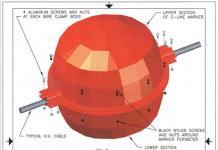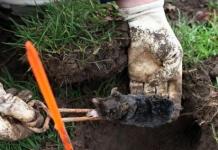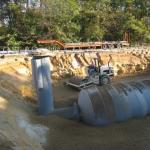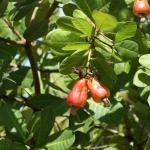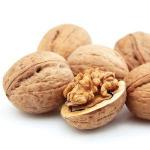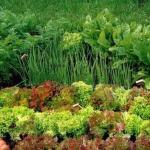Hawthorns are large shrubs and small trees with thorny branches, usually blooming with white flowers in May - June. This is a perennial plant, the average age of some species reaches three hundred years. In autumn, these small trees are decorated with bright, most often red, fruits. The fruits of semi-soft hawthorn (C. submollis) are especially impressive.
The best varieties of hawthorn of different types: photos and descriptions
There are forms with double, pink and red flowers, for example, ‘Toba’. Take a look at what this variety of hawthorn bushes look like in the photo:

Many other species of this plant deserve attention.


So, the type is pistillate ( S. monogyna) has many decorative forms


Daursky ( S. dahurica) It is distinguished by graceful foliage that turns purple in autumn, etc.
These hawthorns are considered the best varieties for creating an aesthetically pleasing garden plot.
These small, thorny plants are unpretentious, drought- and winter-hardy, and grow in almost any soil in sun or partial shade. They tolerate pruning well, which allows you to adjust the size and shape of the crown. You can grow them as tapeworms, especially in standard form. Suitable for creating groups, including mixed ones.
This is a plant that has many species. It can be found in different countries. Many people think that it only has healing properties and is not used in gardens to create compositions. But this is far from true. There are quite a lot of varieties of hawthorn - an ornamental shrub.
In Eurasia, the following types of this plant are often found:


Siberian (blood red)


Common (spiny)


Altaic


Soft


Ukrainian


Monopistil
Let's look at the external features of some varieties and species of hawthorn.


Blood red or the Siberian species is a shrub or low tree, no more than 4 m high. The branches of the plant have rare but fairly large spines (up to 5 cm). The first fruits appear only after 7 years. It blooms for a very short time, no more than 5 days, from May to June. At the same time, the color emits a rather unpleasant odor. The berries of the plant ripen by September. They are edible, sour in taste, round in shape, up to 8 cm, and have up to 4 seeds. The plant is resistant to frost and drought. Lives for a very long time - up to 300 years or more. This species is ideal for creating hedges.


Look what this variety of hawthorn looks like in the photo.


Green meat variety It is distinguished by white flowers with dark stamens. The berries of this bush are black in color, but have green flesh. Edible and delicious. The spines of the plant reach one and a half centimeters. It grows wild in the Kuril Islands and Kamchatka, Russia. This species does not propagate by cuttings. For this, seeds are used, and grafting is carried out to preserve varietal qualities.


Common hawthorn just like the previous variety, it grows in the form of a bush or small tree, reaching 5 m in height. But the berries of this variety are very small - no more than 10 mm in diameter. The plant grows very slowly. But it does not require good soil, can grow well in shady places, and tolerates the formation of a crown by cutting. Therefore it can also be used to create natural hedges.
Look at the types of hawthorn hedges in the photo:


In addition, quite a few varieties of the common hawthorn have been bred, which have a beautiful color:


Paul Scarlet(double flowers with a pink-white tint)


Bicolor(with white petals in the middle and red edges),


Monopistil Unlike the above-mentioned varieties, it is characterized by rapid growth. On average, it lives more than 200 years and has the appearance of a tree, reaching 6 m in height. The branches have small spines, which are located quite rarely from each other. After pruning, it forms many young shoots.


Soft hawthorn has bright orange berries, very tasty. The tree reaches a height of 8 m. The crown is dense, spherical. The plant has many thorns on its branches. It bears fruit in the 8th year of its life. The flowers are snow-white. Due to its leaves and lush crown, it is widely used as an ornamental plant. How to propagate this hawthorn? Seeds or cuttings. Both of these methods give germination rates of up to 50%.
There are quite a lot of hawthorns. You can also see the types and varieties in the photos below:




Growing and caring for hawthorn: how to plant a bush
It has already been mentioned that hawthorn does not require special care. Many varieties, as their descriptions say, are quite resistant to prolonged drying out of the soil, severe frosts, and shade. Before planting hawthorn, you don’t have to think about the quality of the soil, etc. But keep in mind that the plant has the same pests as apple, plum and pear trees, so it is better to plant it away from these fruit crops.
In addition, before planting and further caring for the plant, you need to understand for yourself the purpose for which you are growing it. If you want to get valuable fruits, then choose a sunnier place, but if you are more interested in the decorative features of this plant, then shade or partial shade is quite suitable.
It is also important that if a gardener plans to get a good and strong plant with beautiful colors and berries, he should still pay attention to what hawthorn likes, propagation methods and the intricacies of caring for it.
Here are some features of plant care:
- Trimming. When growing and caring for a plant, it is necessary to remove dead and diseased branches. In addition, pruning can have not only sanitary functions, but also decorative ones. With its help, you can form a crown of the required shape. To do this, it is necessary to trim living branches, leaving 2/3 of the shoot. Pruning is carried out in the spring.
- Fertilizing the soil. This is not a mandatory part of the program. But some gardeners recommend including feeding with slurry. In the first few years after planting and during the period of caring for it in open ground, hawthorn does not require fertilizer. It is appropriate to do this in the period before flowering.
- Watering. Here it is necessary to focus on the climate where the crop grows. Planting and further caring for the plant does not require too wet soil. In the spring and autumn months, once every 30-40 days is enough, but each plant should be filled with up to 15 liters of water. In the dry summer months, you can increase the frequency of watering to once every 15-20 days. If there is enough rainfall in the year, then hawthorn can develop well without additional irrigation.
- Weed control and soil hilling. It is enough to loosen the soil twice a year - in spring and autumn, by digging up the soil around the plant with the bayonet of a shovel. This can be done in the summer, but during this period the depth should not be more than 20 cm. Remove weeds from the area where the hawthorn grows in a timely manner.
These are the basic principles of care that must be taken into account for any variety and type of hawthorn. By following them, you will protect the plant from most diseases, and the tree itself will look very beautiful.




Hawthorn propagation: how to plant seeds
Many gardeners think about how to grow hawthorn correctly, who want to get a good plant that retains all its maternal varietal qualities. Unfortunately, not all methods of propagating hawthorn shrubs, even with proper planting and care, can lose the distinctive features of their species. Therefore this should be taken into account.
Loss of varietal qualities most often occurs when hawthorn is propagated by seeds. Therefore, this method of cultivation is often used when preparing seedlings to create hedges, where varietal qualities are not so important.
The fruits of the plant have a thick skin. Choose ripe, healthy berries. Before planting hawthorn using its seed, it is necessary to harden it (stratification). The process is long and can take up to a year. This is done by keeping the plant seeds at a temperature of +1 to +3 degrees. It is better if such hardening lasts at least 3 months.
The hardened seeds are planted in the ground quite close to each other, since their germination rate is low. In some cases, the first shoots can be seen only after 2 years, since the plant develops very slowly. Weak sprouts are removed.
Leave the young shoot for another 2 years. During this period it will grow up to half a meter. It must be cut to 3 buds, counting from the ground. If during this time many side shoots have appeared, they are removed, leaving no more than two.




How to grow hawthorn: propagation by cuttings
Propagation of hawthorn by cuttings is the main method that allows you to preserve the varietal qualities of the mother plant. Carefully dig up the bush. Select a good and healthy root. Its thickness should not be less than 2 cm. It must be cut into pieces about 10 cm long. The resulting cuttings are laid in the ground, dug in, leaving about 30-50 mm above the ground. All these manipulations can be done in spring or autumn. But the planted material needs to create a greenhouse effect using a jar or plastic film. Ventilate the cuttings from time to time and water if necessary. The ripening period for good seedlings ready for transplantation also varies within 2 years.
Remember that sharp thorns on bushes are an excellent opportunity to create a hedge on your property. To do this, planting hawthorn and caring for it after propagation should be done in holes measuring 0.5 by 0.5 m. The distance between each seedling is about half a meter. Humus can be placed at the bottom of the prepared holes. Watering is carried out as the soil dries for another 2 weeks. Next, moistening is carried out as in an adult plant.
How to propagate hawthorn by layering
Hawthorn can also be rooted by layering. To do this, carry out the following manipulations:
- take a young branch from the mother bush;
- place it in the prepared depression in the ground;
- secure and cover with earth, leaving about 10 cm of branches.
In about a year or two you will get a sprout that retains all the varietal qualities of the mother hawthorn. Agronomic cultivation techniques may include cuttings with green young sprouts. But this type is used very rarely, since rooting does not always give a good result.


If within 2 years your cutting has not reached the required height (up to 60 cm), you can leave it for another year. Such manipulations with hawthorn can be carried out until it reaches 4 years of age. Further, its root system grows very quickly, and it is almost impossible to dig it out without damaging the root.
Hawthorn diseases


Powdery mildew, rust, fomoz, rot - this is not the entire list of diseases that a plant can suffer from. From time to time it is necessary to inspect the bushes for signs of damage. When the foliage of the trunks changes, it is necessary to take immediate measures against the disease, otherwise the decorative effect will be lost. To combat, circumcision of the affected areas is used, which should then be burned.
To minimize possible damage, it is necessary to plant the plant in a well-ventilated area and treat the plant with 1% colloidal sulfur from time to time.
Hawthorn is a plant that has aesthetic and beneficial functions. Not only berries, but also branches and leaves of some species are used as medicine. Having a hawthorn in your garden means getting a beautiful perennial plant with a minimum of effort in caring for it.
Unfortunately, in our country, hawthorn and the tincture of its berries and flowers are remembered only when mentioning Prohibition and the difficult 90s, when there were long lines at the pharmacy for them.
But this is actually a very useful plant with a lot of useful properties - there are “no number” of recipes from it.
In this article, we will first of all talk about growing hawthorn and caring for it in your garden, and of course we will also mention its beneficial properties.
First, a little science.
Genus Crataegus L, family Rosaceae Juss. (pink), superorder Rosanae.
The number of species is 1000-1250. They grow over a wide area in the northern hemisphere between 20s and 60s north latitude. More than 80% of the species are plants of North America (the genus Grataegus is considered systematically complex, as it has a number of polyploid complexes and many interspecific hybrids - Phipps, Muniyamina, 1980; Phipps, 1983).
Hawthorn is mainly valued as an ornamental plant, but it is also important as a fruit crop and is used as a rootstock. Its most famous types are:
C. orientalis Pall., eastern hawthorn, grows in the Crimea, Transcaucasia, Asia Minor, and the Balkans. The seeds contain up to 38% fatty oil, C. pontica C. Koch. – Pontic hawthorn, grows in Eastern Transcaucasia, Central Asia, Northern Iran, Turkey, introduced into cultivation, produces up to 30 kg of fruits from each tree, the diameter of which reaches 30 mm.
Hawthorn plants are small trees (up to 5-6 m in height) or shrubs, branched, with thorns on shoots and branches (C. atrosanguinea has no thorns). Leaves are 3-7-lobed, oblong-obovate, round-ovate, triangular-oval and almost round, often hairy on both sides, less often glabrous or slightly drooping, rather dense. Flowers in corymbs of 7-20 pieces, white, bloom after the leaves extend and straighten. The fruits are from 6 to 30 mm in diameter, rounded-oblate, ovoid-spherical, spherical, ribbed, orange-yellow to dark red, and are a stone-shaped apple. A number of species are edible, but there are also poisonous ones (C. ambigua C, A. Mey. ex A. Beck. - B. doubtful).
In the south of Russia, the blood-red hawthorn “S. Sanguinea."
Hawthorn can be found everywhere, all over the world, and it has been known since ancient times. There is evidence that hawthorn bloomed on our planet back in the Cretaceous period of the Mesozoic era!
Hawthorn has many popular names: boyarka and lady-tree, hunger and gludina, maypole and white thorn... Almost every nation can find mention of this plant in myths or traditions.
There are many known species of hawthorn - more than a thousand. There are 1,125 species growing in North America alone! In Russia and the CIS countries, 74 wild species of hawthorn are common, 89 have been introduced into cultivation.
Of these, the most famous are blood-red, prickly, single-pistillate, crooked-cup, Crimean, Altai, deceptive, chokeberry, oriental, Ukrainian, scarlet, and Daurian.
Cultivated species of hawthorn have taken root in many parks and gardens around the world. Moreover, it helps in the treatment of cardiovascular diseases.
The effectiveness of hawthorn in treating the heart and, importantly, in the prevention of such diseases is the reason why in many countries it has long been successfully grown in gardens.
In Korea, Spain and Italy, hawthorn is grown as a fruit crop, which is no less important than apples. Jam, jelly, surrogate coffee and tea are made from hawthorn.
The two most common types in our country are blood-red and prickly hawthorns. The most famous blood-red hawthorn can be found in central and southern Russia, and in Siberia. In the wild, it most often grows in undergrowth, on forest edges, along river banks, and in steppe ravines.
Hawthorn blooms in May-June, quite modestly - with small fragrant white or pink flowers. It fades very quickly - in a few days, at most a week.
But in the fall its leaves turn golden, orange, and purple. Against this magnificent backdrop, clusters of red berries light up in late August and September. A real boyar's dress! “A hawthorn is good, but not near a boyar’s porch,” they said in the old days. And this is true: it is better to admire and feast on them without boyar interference!
Growing hawthorn in the garden
As a garden tree, hawthorn is very unpretentious - it easily tolerates pruning and crown formation, and for this reason many gardeners successfully use it to create green hedges with their own hands.
My neighbor made a real fence on her property from the “descendants” of my luxurious bush. The hedge looks very elegant, especially in the fall, and protects better than any fence. Dense thorny bushes become a natural barrier for both prying eyes and neighborhood boys. In addition, the thrifty housewife prepares the harvest from this “fence” for the winter: medicine for loved ones, and vitamin supplements for the chickens.
If you want to plant hawthorn in your garden, I advise you to choose a sunny place for it - this way it will bear fruit better.
Two-year-old seedlings take root best.
In the spring, you need to remove dry and diseased branches; in the winter, it is advisable to cover the roots with a dry leaf to keep them from freezing.
You can sow hawthorn seeds before winter or early spring. Or plant in the spring, before the buds open, a root shoot dug at a distance of 1.5-2 meters from the mother bush.
If you decide to make a hedge of hawthorn bushes or trees in your garden (depending on its type), plant the seedlings at a distance of about 25-30 centimeters and gradually intertwine the branches with each other, making gentle pruning until until the hedge takes on a finished look and all that remains is to correct it.
The harvest from even one bush will fully satisfy the needs of the whole family. You can collect not only fruits, but also flowers of hawthorn. Moreover, for medicinal purposes, flowers are often preferable. However, there are subtleties and secrets that you need to know so that the flowers and fruits you collect become truly healing for you.
Hawthorn is a very tenacious plant and is distinguished by its longevity. The winter hardiness of this plant is excellent and over the years it only increases due to the layering of the bark, which is why it is so widespread throughout the world. It also tolerates drought very well, and, as a rule, does not require additional watering when grown in the garden. Loves light - You yourself have probably noticed that in a dense deciduous forest it is oppressed; the berry harvest in such places is much smaller.
Hawthorn propagation
It can be propagated by both seeds and layering. Most people use cuttings to propagate hawthorn. Particularly valuable cultivated species with a high content of useful substances are propagated by grafting - this way they do not lose their properties.
Many gardeners resort to propagating hawthorn by seeds, but in this case you will have to be patient.
Among the diseases, hawthorn is affected by powdery mildew (Podosphaera leucotricha Satm.), fire blight (Erwinia amylovora (Bur.) Com, S.A.V., etc.
Hawthorn plants are long-lasting (up to 200 years), very decorative, especially during the flowering period (April-May), fruit ripening (August-September) and before leaf fall (October-November). They lend themselves well to cutting and are used to create natural fences in parks and individual plots. They are planted on mountain slopes to prevent small landslides. During the flowering period, hawthorn is a good honey plant.
Useful properties of hawthorn.
The fruits of wild hawthorn species have been used by humans since ancient times, especially in China, Central and Western Asia. In Europe and North America, the best forms of hawthorn began to be introduced into cultivation in the 16th-17th centuries, but they did not receive widespread development. As a fruit crop, hawthorn is mainly known in China, Afghanistan, Iran, Turkey, Italy, Spain, Tunisia, Algeria and Morocco, however, in these countries it is only of a consumer, not industrial nature.
Hawthorn fruits contain up to 11% sugars, 0.30-0.66% malic acid, up to 40 mg% vitamin C, carotene, flavonoids (0.3%), saponins (0.2%), glycosides (0.23% ), phytosterols, choline, tannins (3.7%), ursolic, oleamonic, chlorogenic, caffeic, crategusic, citric, tartaric acids, phytosterol, sorbitol. The flowers contain acetylcholine, quercetin, hyperoside, caffeic and chlorogenic acids, flavonoids, saponins, and up to 1.5% essential oil. The seeds contain up to 38% fatty oil.
Hawthorn contains even more pectin substances than the recognized leaders in this field - and. It also contains carotene - some types and varieties in terms of its content can even be compared with rose hips and are only slightly inferior to carrots.
After freezing, fruits lose tannins and become sweeter and less tart. The presence of organic acids gives them a pleasant taste.
Hawthorn has been used since ancient times as a medicinal and prophylactic agent - it was used for this purpose by the physician Dioscorides.
Preparations from the fruits and flowers of hawthorn, as mentioned above, are especially valuable in the treatment and prevention of heart disease. They improve blood circulation in the vessels, have a positive effect on the central nervous system, can lower blood pressure (slightly), and improve sleep very well - I myself fight insomnia with the help of its tincture.
In this article I will not give recipes for hawthorn tinctures and other useful decoctions - let the specialists do this, but on my own behalf I would like to recommend reading the book by pharmacist Natalya Zabotina “Hawthorn Healing the Heart” with a lot of hawthorn recipes for all occasions - it can be easily found and download on the Internet.
The industry produces liquid extract and tincture from the fruit. Liquid extract of hawthorn is part of cardiovalene.
The fruits are used fresh, dried, and ground into flour. Surrogates for coffee and tea are prepared from them, jam, compote, jelly, marmalade, jelly, and caramel filling are made. Oil is extracted from the seeds. The leaves and bark are used to dye wool and fabrics, and the bark is used as a tanning agent. Strong, hard hawthorn wood is used for small crafts and decorations.
From the point of view of agriculture, and not of a simple summer resident, hawthorn is a valuable fruit crop that deserves the creation of specialized plantings. At the same time, it requires serious, targeted breeding work to create varieties that meet intensive technologies.
The benefits of hawthorn and my story about caring for it
I am writing a letter to tell you about my hawthorn.
I am a summer resident with great experience and have never been interested or thought about planting hawthorn: there are few sunny places, it is better to plant an extra currant or gooseberry bush. But at the nth age I was tormented by arrhythmia and blood pressure - they overtook me on the bus, at the dacha, I called an ambulance more than once, I was in the hospital several times. I began to look for something to help myself, besides medicine, and bought two hawthorn seedlings - they said that they were decorative and were not cheap.
I planted it in the best place, just like all the fruit trees. The holes were 60x60 cm, and I added fertile soil, humus, ash, and a handful of superphosphate. She mixed everything and lowered the seedlings. I installed a support - a piece of plastic pipe, tied it up, covered it with earth, and watered it.
One seedling did not take root, but the other began to grow well, bloomed in the fourth year, and still pleases with flowers and large bright orange fruits.
I don’t dig up the ground under it; in the fall I put humus and ash under the crown. I dig shallow holes along the crown and throw in super phosphate or autumn fertilizer. This year I collected 3 kg of berries - I remove them from the tree when they become soft. Several times I was left completely without berries, the thrushes were ahead of me - a whole flock flew in, covered the whole tree and left nothing. But I try to be more conscious, always leave them a few eyelids with berries.
Hawthorn, like all fruit trees, can become diseased - this is immediately obvious from the leaves and berries: sand-colored spots appear. They do not affect the usefulness and quality in any way, but they should not be there. In the spring it is necessary to treat against diseases and pests.
I dry my hawthorn berries on towels, then put them in two plastic bags and put them in the freezer. You can dry them in the oven. Previously, I brewed them in a one and a half liter thermos - threw in a handful of berries and poured boiling water over them. I drank half a glass three times a day. Now I just cook compotes for two days: frozen hawthorn, blackberries, red currants and a little sugar. I only drink the compote itself, throwing away the berries - there are too many seeds.
There are a lot of types of hawthorn, and only 10 of them are planted in summer cottages - these are ordinary, blood red, Daurian, Altai, etc. Their fruits (berries) are orange, pink, bright red, black. All have spines. My hawthorn has very hard spines, 3-3.5 cm long. I cut my hawthorn in the fall to the height I need to make it convenient to pick berries.
Everything about hawthorn is healing: leaves, fruits, and flowers. The leaves, as well as the flowers and fruits, contain vitamin C. The fruits contain vitamin P and many various substances necessary for the heart, organic acids.
beauty
Now about the hawthorn hedge. My neighbor has a street fence made of it, but he still installed a large mesh fence. You can make such a fence around the entire perimeter of the site. A formidable defense, thick, with thorns - neither a person nor an animal will pass through, it does not even allow light to pass through.
For hedges, hawthorn seedlings (usually three years old) are planted in holes 60x60 cm (written above), or in a trench along a stretched rope. The distance between seedlings is 1 m. It is advisable to shed holes with good soil and mineral fertilizer with potassium permanganate. Caring for seedlings: fertilizing with mineral fertilizers, watering several times during the summer. After 2-3 years, when the seedlings have grown and the trunk diameter reaches about 2 cm, the trunks are cut to a height of 25-30 cm from the ground. The cut area should be covered with oil paint, white plasticine, etc. In the spring, shoots will emerge from the cut trunks - the skeletons of the future fence. Then they will be overgrown with numerous thorns - this is the time to form the fence to the height you desire.
If you buy a large number of seedlings, it will be a little expensive, but you can grow them from seeds, propagate by root cuttings, layering, and grafting.
Seeds are planted in autumn. Fresh seeds from unripe berries are soaked in water for 3-4 days. They germinate with difficulty. Seedlings need to be picked, planted in a garden bed and only transplanted to a permanent place at the age of 3-4 years.
The heart berry is the name given to the fruits of hawthorn. But they are no less useful for the brain - they improve memory and performance. Hawthorn treats both hypertension and hypotension, quickly relieves headaches and migraines. It effectively cleanses the liver, helping to reduce bad cholesterol. Good for diabetics. Regular consumption of hawthorn slows down the aging process.
5 reasons to love hawthorn
Particularly pragmatic summer residents see in this culture only an excellent “building material” for a green hedge. True romantics of dacha business value hawthorn not at all for its thorns.
Reason one
Hawthorn has been growing in my dacha for about forty years: at first there were two bushes, now there are nine. There could be much more, but there is no room for them. “How so? - you ask. “Should I plant it along the border of the property to isolate myself from the neighbors?” But I have no secrets from them, and I live friendly with them. As for hawthorn, this culture is extremely unpretentious in care. I don’t even feed it with anything at all, I only water it sometimes if the weather gets really hot. In addition, it grows normally either in the shade or in the sun, although in the latter case its fruits ripen earlier.
Therefore, you can easily vary the timing of harvesting, correlating them with your plans for its processing.
For example, I really like that on those bushes that grow in the shade, the berries ripen completely very late - when the heating is already turned on in the apartment and I can dry them on the radiator, pouring them into old tights (in such a “container” they dry very quickly). quickly and well). In winter, I brew them in a thermos and drink them at night.
Reason two
And I make compotes from hawthorn berries like this: I wash the fruits well in running water, pick off everything unnecessary from them - and immediately put it into a three-liter jar. I fill it halfway, pour boiling water over it and leave it for half an hour. Then I pour the water into a saucepan, add 150-200 g of sugar, stir and boil again. Meanwhile, I throw a pinch of citric acid into a jar of berries, and then fill it with hot syrup from the pan, roll it up and put it under the blanket to cool. For the winter I roll up 50 of these cans, and by spring they are all used up. After all, this is a royal drink!
Reason three
I also make jam from hawthorn. It turns out delicious - there are no words to describe it! And this despite the fact that no special recipe is required: I cook hawthorn berries exactly like
like the fruits of other horticultural crops. Do I need to remove the seeds? Whatever you want, it doesn’t affect the result. In winter, I take one spoon of this jam and eat it with tea or just hot water.
Reason four
And, of course, I make wine from hawthorn. For this you need only well-ripened berries, when they are, so to speak, already at their limit: soft, juicy, large. I wash them, crush them, put them in a large saucepan, fill them with cold, settled water so that it slightly covers them. I sprinkle a little sugar on top (but don’t stir!), place the pan near the radiator, cover with gauze and a lid on top. When the juice begins to ferment, I stir it several times and about five days after that, I squeeze out the berries and strain the liquid. Then I add sugar to it (at the rate of 100 g per liter) and leave it for further fermentation.
Then I filter it again and pour it into a twenty-liter bottle, again add a little sugar, put a rubber glove on the neck and leave it to ferment again. From time to time I try the juice - is it sour? – and if necessary, add sugar again. To make a tasty drink, it needs to infuse for a long time, first in a warm place and then in a cool place.
In the winter I take the bottle to the dacha, and in the spring I uncork it and enjoy the new wine. It has everything: vitamins, good sleep, great taste, and after using it the pressure was gone. Try it: very tasty and healthy!
Reason five
If one of the summer residents still wants to make a hedge out of hawthorn, then the bushes should be planted at a distance of a meter from each other. Take only young seedlings and, when they grow to 50-70 cm, cut off the tops of their heads, and then they will begin to develop not upward, but in width.
So control the height of the fence, cut off all excess.
It only remains to add that, of course, it is difficult to come up with a more convenient plant for a green fence than hawthorn. Health and good luck to all summer residents!
If anyone needs seeds, I can send them.
Hawthorn hedge
I don’t know why they write so rarely about hawthorn, because this culture, like no other, deserves attention and gratitude. Personally, it does not create any trouble for me: it is resistant to disease, blooms beautifully in the spring, and in the fall its bushes are strewn with bright crimson fruits. Next to my boyarka (as they call it in our area) viburnum, serviceberry, and barberry grow - it turned out to be a wonderful, almost forest-like corner. But in general, boyarka is one of the most unpretentious shrubs for hedges. It creates such thorny thickets that a cat cannot get through. You just need to cut it on time, otherwise you won’t be able to get through such thickets with pruning shears!
To keep the hedge dense, I advise you to plant two plants per linear meter. The boyarka hedge is very picturesque in the fall, and not only because of the berries: small leaves, unremarkable in the summer, will sparkle in the fall and turn orange-brown.
Boyarka bears fruit annually, and the berries ripen in August-October and remain on the branches for a long time. During flowering, it seems that the whole bush is buzzing - so many pollen lovers gather on it. And in winter, if the fruits are not collected in time, the birds will instantly steal all the vitamins. The berries taste sour-sweet, rich in vitamins C and P, as well as carotene. They are used for cardiac weakness, insomnia, shortness of breath, and neuroses.
I will share my favorite recipes.
Hawthorn with sugar. I blanch the prepared fruits in boiling water for 3 minutes and wipe through a colander. For 1 kg of mass I add 1/2 kg of sugar, bring to a boil and package.
Hawthorn jam. I cook the berries until they soften (1/2 cup of water for 1 cup of fruit), and when they cool down, I wipe them, mix them first with sugar (1 kg of mass 1 kg of sugar), then with the broth and boil to the desired thickness.
Hawthorn
The genus hawthorn (Crataegus L.) is diverse and amazing. Includes about 1250 species, most of them settled in North America. Our nature is not deprived of them either.
Different types of hawthorn can be found on forest edges and clearings, in open forests; in forest-steppe regions, its thickets occupy tens of hectares along the slopes of ravines and valleys.
Plant species
The well-known hawthorn (C. Monogyna Jacg.) has many magnificent garden forms: with pyramidal and weeping crowns, twisted branches (white or yellow-variegated), tricolored or red-edged leaves.
In autumn, the crown of the Almaty hawthorn bursts into clusters of dark purple apple-shaped fruits with burgundy flesh, gradually darkening to black. In its homeland, this species settles on mountain slopes and in gorges. It has taken root well here and is decorative in flowering and fruiting.
The native of the Tien Shan is unique in its picturesqueness - the Fergana hawthorn, which has settled on the banks of mountain streams and the slopes of ridges. Its impressive flowering is followed by no less outlandish fruiting.
 Hawthorn – photo
Hawthorn – photo Reproduction
Cultivated forms of hawthorn monopistillate do not bear fruit. They can only be propagated vegetatively. The most reliable way is vaccination and budding for wild species. If the branches are close to the ground, it is possible to get layering.
Almaty and Fergana species reproduce by seeds (seedlings bloom in the tenth year, sometimes much earlier), root (rhizoma) suckers, grafting and budding. Fruiting occurs after 5-6 years.
Healing properties
Hawthorn preparations (infusion of fruits and flowers, liquid extract from fruits) reduce the excitability of the central nervous system, have a tonic effect on the heart muscle, increase blood circulation, eliminate tachycardia and arrhythmia, improve sleep and the general condition of patients.
Simple growing rules
- The best results can be achieved when growing hawthorns in deep, moderately moist, well-drained fertile heavy soils. A sunny location is a must. : How to grow hawthorn with Ladyberry and hawthorn...: Plants (shrubs, vines, trees) with...
- : How to grow medlar Loquat is quite...
- : Otricoli: how I tamed the “Italian” Two...
In Europe and especially in England, hawthorn hedges are an absolute favorite. A shrub with a uniquely dense crown is truly ideal for creating green fences. But hawthorns also have other advantages. Romantic and spectacular flowering and beautiful fruits will decorate any garden. And the endurance and unpretentiousness of hawthorns still have no equal.
Common hawthorn or prickly hawthorn (Crataegus laevigata). © Kor!An
Hawthorn is a familiar plant that never goes out of fashion.
Hawthorn is a large garden shrub, which in our country is considered completely ordinary and typical. But there is nothing wrong with the fact that the appearance of hawthorns is familiar to everyone and has been used for centuries. After all, it is difficult to find a more reliable candidate for the role of garden decoration, as well as a better plant for creating background and dense plantings.
The scientific name of hawthorn - Crataegus - directly reflects the hardness of its wood (from "krataios" - "strong"). Even the thorns of the hawthorn are so strong that they can pierce almost any shoe, and in the old days they were used instead of nails. Thanks to the most noticeable, species-defining and unique part of this plant in Europe, hawthorn is simply called thorn.
Representatives of the genus Crataegus are deciduous and semi-evergreen shrubs, less often trees with a dense crown. Despite the fact that hawthorns are often pruned, giving them more compact silhouettes or walls, they remain neat and strict even without shaping. In nature, the maximum height of bushes is not limited to 5-7 m, but in the garden, hawthorns are bushes with an average height of 2 - 3 meters, with rare exceptions. Hawthorn is able to surprise with its neat and beautiful crown of a round or cone shape, which is naturally quite dense.
The shoots are purple-red, very beautiful, of varying degrees of pricklyness. The graceful leaves of the hawthorn can be either whole or lobed; they show off a dark green color in the summer, but they have prepared the main show for the fall, when the usual outfit gives way to an orange-red fire.
The spines of hawthorns are modified shoots; at the beginning of development they are small and with tiny leaves, after the loss of which the spines change green color and become more and more durable. In North American species, spines grow up to 5-9 cm, in rare cases - even up to 12 cm; in most European hawthorns they are absent or do not exceed 2-3 cm. The unusually sharp and large spines of hawthorn not only complicate working with the plant , but also require special care when moving near bushes: any shoes for hawthorn thorns are not a barrier.
The flowering period of hawthorns usually occurs in May and June. White or pink flowers are collected in corymbs. Despite the fact that the flowers are small, up to 3 cm in diameter, they sit in dense shields and the bush seems much more lush.
Among the hawthorns there are varieties with double flowers. All hawthorns, without exception, are characterized by beautiful stamens and anthers. Hawthorn blooms profusely and very impressively, before the leaves bloom, but the aroma of the inflorescences is rather unpleasant and repulsive.
After flowering, hawthorns do not always annually produce not only beautiful, but also edible fruits that stay on the branches for more than 2 months. Large, round, pear-shaped or elongated berries of hawthorns are traditionally associated with an orange-red color, but in different species the berries can be purple, black, or yellow. The fruits contain up to 5 triangular hard seeds, and they are located at the top of the fruit. The size of the fruit varies from a few millimeters to almost 3 cm. Hawthorns bear fruit from the age of 8-10 years.
 Flowers of the common hawthorn variety 'Crimson Cloud' (Crataegus laevigata 'Crimson Cloud'). © creeksideboulder
Flowers of the common hawthorn variety 'Crimson Cloud' (Crataegus laevigata 'Crimson Cloud'). © creeksideboulder Types and varieties of hawthorns
In nature, hawthorns are very widely represented. The genus Crataegus includes more than a thousand species of shrubs found only in the northern hemisphere, within temperate and partially subtropical climate zones. Among the hawthorns there are both plants that are radically different from each other, as well as strikingly similar and difficult to distinguish species.
To facilitate recognition in landscape design, it is customary to separate Eurasian and North American hawthorns. The former are characterized by deeply lobed leaves and small or absent spines. North American hawthorns have entire or slightly lobed leaves. These are shrubs with very large and strong spines. North American species today are considered more decorative and promising.
The most common type of hawthorn is still common hawthorn, or hawthorn prickly (Crataegus laevigata). Wind and gas resistant, affordable and very common, it is one of the most versatile garden shrubs. This hawthorn traditionally blooms in May-June. The leaves with 3-5 lobes are bright and glossy, the shoots are prickly. The common hawthorn is characterized by a neat oval crown. The flowers are not only white, but also bright pink; different varieties have different bark layers.
This hawthorn today offers a choice between different varieties and interesting shapes. For example, the variety “Paul Scarlett” with raspberry-pink double flowers is very popular. Decorative forms are even more common - white-pink Bicolor and red Pauli, golden form with yellow fruits and oak-leaved with leaves decorated with round lobes.
 Flowering of the common hawthorn "Paul's Scarlet" (Crataegus laevigata 'Paul's Scarlet')
Flowering of the common hawthorn "Paul's Scarlet" (Crataegus laevigata 'Paul's Scarlet') Hawthorn blood red, or bloody hawthorn (Crataegus sanguinea) - a spectacular hawthorn with very beautiful flowering. Its spines are large, up to 4 cm, but they are located very rarely. The flowers are white, with purple anthers. The fruits are blood-red spherical berries drooping on thin stalks. No less than flowering and fruits, this shrub is decorated with brown bark, a few straight spines, and bright leaves flaunting shallow blades.
Hawthorn softish, or semi-soft hawthorn (Crataegus submollis) is one of the best North American species. Orange fruits with very tasty pulp are a pleasant bonus for those who choose this species to grow in their garden. The plant has very thin spines, densely shedding branches, the crown is almost perfectly round in silhouette, amazingly thick. The leaves are bright and whole, turning dazzling red in the fall.
One of the most popular types of hawthorn is hawthorn monopolyta (Crataegus monogyna). This is a large classic species with a height of 2 m, has a very dense crown and can easily tolerate strong formation. The shoots are densely spaced. The bush blooms profusely in May and June. The flowers of this hawthorn are white and pinkish, pink anthers on the stamens give the plant an unusual charm. The fruits are light red and are considered valuable medicinal raw materials. The single-pistillate hawthorn has many decorative forms - pyramidal pink, white terry, white-variegated, thornless, red terry, continuously flowering, crimson, weeping, split-leaved, etc., as well as a number of hybrid varieties.
 Blood red hawthorn (Crataegus sanguinea). © travibaikal
Blood red hawthorn (Crataegus sanguinea). © travibaikal  Soft hawthorn (Crataegus submollis). © pargipuud
Soft hawthorn (Crataegus submollis). © pargipuud  Hawthorn (Crataegus monogyna). © vdberk
Hawthorn (Crataegus monogyna). © vdberk Green meat hawthorn (Crataegus chlorosarca) can compete with semi-soft in the density and density of the crown. This is a very beautiful plant with short spines, snow-white flowers and almost black tasty fruits. Gray bark and purple shoots, ovate leaves with shallow lobes and dense inflorescences with dark anthers make this plant stand out from any other hawthorn. This is a highly decorative species with atypical gray-black colors, which always attracts the eye.
Dahurian hawthorn (Crataegus dahurica) is a very decorative species with graceful, medium-sized leaves and a compact crown size. Most often it develops in the form of a low tree with gray bark, reddish shoots with medium-sized spines and lanceolate-diamond-shaped, deeply lobed leaves, creating an elegant crown. White flowers with purple anthers look very delicate. Centimeter-long, spherical fruits of bright red color appear already from the age of six.
Universal in its decorative effect, suitable for solo parts and for hedges, original pinnately cut hawthorn (Crataegus pinnatifida). This is a spectacular spreading shrub with dark gray bark, very sparse thorns and medium-sized pinnately dissected leaves with a bright color. The fruits of the plant are decorated with warts, and the bush itself looks unusually picturesque and elegant.

Has the largest spines large-thorned hawthorn, or hawthorn macroanther (Crataegus macracantha), making it an ideal candidate for creating impenetrable hedges. Spines up to 12 cm long and a very dense crown are combined with light bark, shallow-lobed dark leaves, which are famous for their yellow-red autumn color and ability to persist longer than other species. Bright large fruits glow against the background of foliage; they are somewhat dry and less tasty, but very impressive in appearance.
Today it is very popular hawthorn Lavalierie (Crataegus x lavalleei), in particular, its most popular variety “Carrierei”, which in catalogs is even called a separate variety - hawthorn Carrieri. White-pink May flowering and bright orange-scarlet fruits look extremely impressive.
Among the controversial hybrids is one that is very popular among us. hawthorn morden (Crataegus x mordenensis) - a shrub with double flowers that change bright pink to white, and has thornless shoots. This hybrid does not bear fruit, but is considered a beautiful flowering variety.
 Flowering hawthorn morden. © Nadiatalent
Flowering hawthorn morden. © Nadiatalent Of the very large species of hawthorn, it is worth paying attention to the following:
- hawthorn vattiana (Crataegus wattiana) - a luxurious shrub or tree up to 6-8 m high with a few thorns, bluish foliage and complex shields of white inflorescences, surprising with yellow balls of fruit;
- hawthorn fanata (Crataegus flabellata) - a species with upright growing shoots, large curved spines, ovoid, fan-shaped leaf blades with a serrated edge, snow-white flowers and bright red fruits;
- Douglas hawthorn (Crataegus douglasii) - a species with beautiful dark bark, without thorns, with irregularly lobed dark leaves, white shields of inflorescences and purple-black fruits up to 1 cm in diameter, captivating with its shade tolerance;
- Maksimovich's hawthorn (Crataegus maximowiczii) with gray-brown branches, without thorns, with ovate leaves and large red fruits.
In the southern regions, it is worth paying attention to a species with original foliage that is not winter-hardy enough for the middle zone - pear hawthorn (Crataegus phaenopyrum) - a species with original, viburnum-like leaves, straight five-centimeter spines and red fruits, the diameter of which is slightly more than 0.5 cm.
The use of hawthorns in ornamental gardening
It is not for nothing that hawthorns have gained a reputation as universal garden shrubs. They are suitable for landscaping large, medium or small areas. Their bushes never look too bulky or, conversely, inconspicuous.
Hawthorns are used as:
- berry bush, a plant with bright, attractive fruits;
- deciduous shrub with a spectacular autumn crown,
- beautiful flowering plant.
Hawthorns are equally good as individual plants or in groups of varying sizes and densities. Plants are grown as shrubs, in tree and standard form.
Hawthorns are used in garden design:
- in impassable hedges of landscape or strict type;
- in the undergrowth and forest edge;
- in the alleys,
- as a background shrub;
- in groups with evergreen and landscape species;
- for curly haircuts and placing accents and introducing strict soloists;
- in the background there are large ridges and flower beds;
- for wind protection, camouflage and creating screens.
Hawthorns attract honey insects to the garden, filling it with the cheerful buzzing of bees. And birds are very fond of this bush: they not only feast on the fruits of the plant, but also happily use it to reliably cover their nests.
Hawthorn is a valuable berry bush. The fruits of the plant are edible in all species, but usually only large, tasty and fleshy fruits of just a few species are considered as medicinal and nutritious. Berries not only decorate the garden, but are also used in cooking. They are harvested as they ripen, from August, but the most delicious harvest can be obtained after the first frost.
 Hawthorn hedge. © Upupa Epops
Hawthorn hedge. © Upupa Epops Conditions required for hawthorns
The reputation of the hawthorn as an unpretentious shrub, which even novice gardeners can grow, has been proven by centuries of practice in garden design in a variety of climatic zones. Hawthorns surprise with their undemanding nature and resistance to adverse conditions and polluted environments.
For hawthorns, it is important to provide sufficient lighting: shading negatively affects both flowering and fruiting of the plant. If hawthorn is grown not for its fruits, but mainly for its dense crown (especially if it is planted to create dense hedges), then the plants can be considered shade-tolerant.
For hawthorns you need to choose high-quality and loose soil. This shrub thrives in both loam and sandy loam, is not afraid of the polluted environment of urban conditions, and tolerates gas pollution well. Fertile, fresh or moist soils are best for hawthorns, but in general the plant survives in almost any conditions, except extreme ones. The soil reaction is preferably alkaline; hawthorn does not like acidic soils.
Planting hawthorn
Hawthorns, even in regions with harsh winters, can be planted both in the spring, as soon as the soil warms up, and in the fall, at least a month and a half before the arrival of stable frosts. Hawthorns are recommended to be planted in a permanent place at the age of two, because older plants take root worse, and one-year-old seedlings need more careful care.
Hawthorns are placed at a distance of 1 to 2 m for decorative groups and from 15 to 50 cm for hedges. Single-growing bushes can be placed at a distance of 3 m from neighboring crops, but usually such a distance is left only when growing tree-like forms of hawthorns, which are used as tall tapeworms in large gardens.
Planting holes must be prepared in advance. For this shrub, large planting pits with a depth and width of about 70 cm are prepared. It is better to replace the excavated soil with a special substrate, mixing humus and leaf soil with sand, peat and compost and increasing the alkaline reaction by adding lime. It is better to lay a drainage layer of crushed stone or brick chips at the bottom of the planting holes. Before planting, the planting holes are saturated with water.
Pruning of seedlings is carried out only if the plants are used for hedges. It is carried out in the same way for ordinary hawthorns and when tall or tree-like hawthorns are used, which over time lose their bushy shape and do not produce a large number of shoots. Such plants are planted “on the stump” to stimulate crown thickening: they are cut to a height of 10-15 cm, stimulating the growth of strong skeletal shoots.
Hawthorns are planted using the standard method. Plants are installed so that the root collar remains flush with the soil after the soil shrinks. Planting is completed with abundant watering and mulching of the soil.
 Common hawthorn, grown as a short tree. © dobbies
Common hawthorn, grown as a short tree. © dobbies Caring for hawthorns
The need for watering of shrubs is directly determined by the type of plant. Moisture-loving species and varieties must be watered regularly to ensure stable soil moisture. Watering for capricious plants is carried out rarely, but systematically. One watering once a month with deep soaking of the soil is enough, but twice as frequent water procedures in the summer. Drought-resistant hawthorns do not need watering. But several such procedures at the budding stage and after flowering will help the plants produce a more abundant harvest.
Hawthorns are content with minimal feeding. For these shrubs, it is enough to carry out one fertilizing in early spring to provide the plant with all the necessary nutrients. For hawthorn, complete mineral fertilizers are used in the amount of 100-120 g per square meter of planting. At the beginning of summer, the plant can be additionally fed with any organic fertilizer. If hawthorn is grown for the sake of the most abundant harvest possible, then it is better to carry out three feedings - with full mineral fertilizers in the spring, with potassium-phosphorus fertilizers - at the beginning of flowering and after the start of fruiting.
Hawthorns do not like compacted soils, so it is better to include regular loosening of the soil in the bush care program. It is usually combined with weeding, carrying out light loosening to a shallow depth (up to 10 cm) throughout the season. High-quality aeration or digging of the soil with a shovel is carried out along the perimeter of the tree trunk once a year - in early spring or autumn. Mulching will help simplify plant care. For hawthorns it is not necessary to use special mulch: even simple soil or peat with a layer of 3-4 cm will do.
Despite their status as a resistant plant, hawthorns can suffer significantly from specific and fruit pests, powdery mildew and rust. Fruit sawflies, mites, scale insects, mealybugs, weevils and other pests of apple, maple and cherry trees are often found on hawthorns. Rust or powdery mildew and various types of spotting are combated with highly specialized fungicides. For pests, it is better to carry out preventive treatments with insecticides simultaneously with fruit plants.
Pruning and shaping hawthorn
This shrub perfectly tolerates any forming and is considered one of the “dense” shrubs for any hedges - both landscape and formal. The ability for enhanced shoot formation allows you to change the shape and control the size of hawthorns as you wish.
There is only one mandatory pruning for hawthorns - sanitary cleaning. In the spring, damaged, dry, unproductive shoots are removed from the plant, like any other shrub.
Formation is carried out depending on the desired shape and contours: both to create a strict silhouette and for a hedge, shoots can be cut to 1/3 of their length. In hedges, initial shaping is carried out: the next year after planting, the shoots stimulated by strong pruning are removed, leaving the two strongest ones. Subsequently, the shoots are intertwined and cut to the desired shape.
 Young hawthorn seedlings for planting hedges. © digdelve
Young hawthorn seedlings for planting hedges. © digdelve Wintering hawthorns
Most types of hawthorns are winter-hardy plants that do not need winter protection. It is advisable to provide decorative varieties and forms of any hawthorn with light shelter for the winter, protecting the roots that are prone to protrusion and are located high. A high mulching layer of dry leaves up to 10 cm high is suitable as a protective layer. Species hawthorns, with the exception of low-winter-hardy southern species, will not need shelter. In prickly hawthorn, flower buds and shoots often freeze, but the plant recovers well.
Hawthorn propagation
The availability of planting material and low prices for hawthorn seedlings are largely explained by the ease of their propagation. The more striking characteristics a variety has, the larger the flowers and berries it produces, the more expensive the cost of planting material. Independent propagation of hawthorn requires patience, because the plants bear fruit only after eight years of age, but it is not too complicated in its methods.
The easiest way to get a new generation of hawthorns is vegetative. Layers of hawthorns take root well. It is enough to hill up the base of the bushes or fix individual branches in the soil and regularly water the plants to speed up rooting, and the next year you can plant independent plants.
Other methods are also used for reproduction.:
- separation of root suckers;
- rooting of root cuttings (a root about 2 cm thick is divided into fragments about 10 cm long and rooted like ordinary cuttings - buried 7-8 cm into the soil and maintaining high humidity using a cover-cap);
- grafting of varietal plants and ornamental forms onto rootstocks of hardy hawthorns (for example, common, thorny and monopistillate).
Growing from seeds is not difficult, but the process of growing plants is very long. It will take up to 2 years for the plant to sprout, and the stratification period for different types of hawthorns ranges from 6 to 12 months. Many of the plant’s seeds are empty; the germination rate is quite low, about 50%. Hawthorn is sown before winter, and for sowing, freshly harvested seeds of unripe fruits are used, in which the shell around the seeds has not yet completely hardened. The fruits are soaked in water for several days, and then rubbed through a sieve and the seeds are washed to remove any remaining pulp. The seeds are pickled during the day in a solution of a growth stimulant or potassium nitrate of one percent concentration.
Sowing of seeds is carried out before winter in large boxes or greenhouses. The seeds of the plant are sown very densely. The crops are covered with soil and a layer of dry leaves on top. In spring, hawthorn seedlings are almost indistinguishable from apple tree seedlings; they are very small. During the first year, the plants grow slowly, reaching a height of only 10 cm only with constant care. To grow them into the beds, they are transplanted the next year. In addition to watering and other care, they begin to carry out formation, cutting off all shoots that have reached a height of 50-60 cm to the level of the second or third bud from the bottom in order to stimulate the growth of lateral branches. During the entire period of growing, the plants are controlled by shortening the main shoots and leaving only 2 side shoots, removing excess shoots and forming the base of the bush from strong branches.
Large-fruited hawthorn is worth growing in every garden. Effective as a single plant. Planting in a single row along the property line will create an impenetrable hedge. It is beautiful during flowering and a delight to the eye in the fall, when it is strewn with red fruits and the leaves change color to autumn tones. The fruits are edible and have medicinal properties. It does not require special care, it is winter-hardy and drought-resistant.
Types of hawthorn
When choosing hawthorn for planting in the garden, you should pay attention to the most unpretentious species with large fruits and high yields: pinnathorn, softish and American Arnold.
The only requirement: planting should be done in places well lit by the sun; groundwater should not pass close to the surface. Maintenance is minimal; these garden trees do not require much attention.
Description of hawthorn Arnold
Arnold's species is similar to soft hawthorn. Its branches are more sinuous. The fruits at the top are covered with long white hairs. The pulp of the fruit is pink. It bears fruit in the first half of September and quickly falls off.
Hawthorn softish
It grows in the form of a tree with a height of 6 to 10 meters. The crown naturally forms in the form of a rounded tent. The shoots are twisting, covered with long spines, 6-8 cm in size. The spines are shiny brown and can be straight or curved. The leaves are ovoid, 3-4 cm wide and 3 to 7 cm long. The leaf edge is serrated.
Care is not difficult, fruiting begins 6 years after planting. The fruits are large, up to 2 cm in diameter, orange-red in color. Their shape is round or pear-shaped. The pulp is mealy, yellow in color, and tastes pleasant.
Far Eastern pinnately incised
Hawthorn pinnately is a tree 4-5 meters high. Due to its growth, it often grows in the form of a branched bush. The spines are rare and sharp. They are short, only 1-2 cm, sometimes they may not be there at all. It differs from other types of hawthorn in the shape of its leaves. They are cut into 5 or 7 lobes. The blades are slightly wavy and serrated, making them look like feathers. The leaves are large, 8 cm long and 5 cm wide. The upper part of the leaves is a rich green color with a shine, and the lower part is lighter.
Its flowers have an unpleasant smell, but the flowering period is short, no more than 5 days. The fruits are from 1.5 to 2.5 cm in diameter. The fruits are covered with white pimples, the flesh is red. Their taste improves when they are a little overripe.
Hawthorn pinnately cut is recommended for growing in areas where there are night frosts in the spring. Due to late flowering, in June, it is not subject to spring frosts, which has a positive effect on yields. The berries do not fall until winter.
Garden hawthorn is propagated in two ways: by seeds and vegetatively.
How to grow hawthorn from seeds
This is a more labor-intensive method that will require patience and proper care of the young seedlings. Hawthorn seeds are covered with a dense peel and a thick protective layer. This complicates gas permeability, and therefore the embryo is in a state of deep dormancy. The awakening process lasts about 2-3 years, seedlings appear unevenly. Large seeds may not germinate at all.
Stratification helps speed up germination. To do this, the seeds are mixed with peat. They are kept in a damp state for 4 months at a temperature of 20 – 25°C, then put in a cool place for 6-7 months. The temperature must be maintained between 4° and 7°. After stratification, they are again brought into the heat.
If, instead of a peat mixture, planting is carried out in sand, the awakening period increases by 1-2 months.
There are several ways to shorten the process:
- the seed is washed in a large amount of running water and then dried at a temperature of about 50°C;
- to soften and destroy the hard shell, soak in hydrochloric acid for 20 minutes;
- cut off the top of the bone with a sharp pruner;
- seeds are taken from large unripe fruits, when the shell has not yet hardened.
For sowing, you should take two to three times more seeds than necessary. Some planting material is often sterile.
Vegetative propagation
When an old tree is cut down, dormant buds awaken, from which many shoots grow. Shoots that have grown their own roots are excellent planting material. She takes root well and retains all her maternal properties.
Planting green cuttings is less effective: rooting is difficult and survival rate is minimal.
Growing seedlings
The sprouted seedlings must be grown in a schoolyard. This process is lengthy and takes three to four years. During this period, regular care is required: weeding, loosening and fertilizing. The first year the soil must be constantly kept moist; in the second year it is watered infrequently, but abundantly.
The main fertilizer during the growing period is nitrogen. It helps the development of seedlings, improves the absorption of nutrients from the soil, and protects plants from diseases. It is used in liquid form during watering.
From the second year of cultivation, the crown begins to form. If the plant will continue to grow as a single plant, or is needed to create a landscape composition, then it is advisable to form a small trunk by cutting off the lower branches. Then the plant is allowed to grow in free form.
If planting hawthorn involves creating a hedge, then the tops of the plants are shortened to enhance the growth of lateral shoots. This procedure is repeated every year.
Landing at a permanent place
Plant garden hawthorn in a sunny place. Planting in shade or partial shade does not allow it to fully develop. Lack of sun reduces yields, and sometimes there are no fruits at all. The soil should be fertile and moderately heavy. Acidic soils must be limed. Planting is done in pre-dug holes, 60x60 cm in size, of the same depth. When planting in groups, the distance between trees is left at least 4 meters. To create a hedge, plant them often, 50 cm apart. When planting, the root collar should remain strictly at ground level.
Read also: Features of caring for decorative deciduous begonia
Hawthorn care
A good quality seedling, planted according to all the rules, in a suitable place, does not require special attention.
- Caring for it involves sanitary pruning, which can be done at any time of the year. Shaping the hedge or trimming the bushes in accordance with the landscape design is carried out in the spring.
- It is necessary to weed the tree trunks and loosen the soil. This maintenance can be reduced to a minimum if you cover the soil with a layer of mulch and update it periodically.
- Fertilizing is carried out once, before flowering. Manure is diluted with water in a ratio of 1:10. One bucket of fertilizer is enough for one tree.
- Hawthorn is a drought-resistant plant. It is necessary to water it only in hot summers and during periods of prolonged absence of rain.
If the soil on your site is very light, with a predominance of sand, then in hot weather you will have to water more often, 2-3 times a month. The same applies to fertilizing. In the fall, you will have to add humus under the tree and dig it up with a shovel.
Hawthorn is susceptible to the same diseases as apple trees. When carrying out preventive care for apple trees, do not bypass the hawthorn.
Every spring, before the buds open, spray the trees with 3% Bordeaux mixture. If signs of disease are noticed in the summer, then you need to re-treat, but prepare the Bordeaux mixture at a lower concentration - 1%.
Dry branches should be cut out in a timely manner. In autumn, it is advisable to collect fallen leaves and old mulch from under the trees and burn them. Fresh compost and digging will prevent pest larvae from overwintering in tree trunk circles.
Useful and healing properties
Hawthorn flowers and leaves have healing properties. They are used to make tinctures and dried for tea. The fruits contain many vitamins, which are also preserved in dried berries.  Hawthorn is useful for vegetative-vascular dystonia, mild disorders of the heart, strengthens blood vessels, and has calming properties. But, it can be used as a medicine only after consulting a doctor. But as a vitamin tea that improves performance, normalizes blood pressure, and saves from insomnia, you can drink it every day.
Hawthorn is useful for vegetative-vascular dystonia, mild disorders of the heart, strengthens blood vessels, and has calming properties. But, it can be used as a medicine only after consulting a doctor. But as a vitamin tea that improves performance, normalizes blood pressure, and saves from insomnia, you can drink it every day.
Leaves and flowers are collected in spring to make tea. Flowers are most useful when they have not fully bloomed. Dry them in the shade, in a warm, ventilated room, spreading them out in a thin layer. From time to time you should stir it slightly. Store in glass jars, the lid must be closed.
In autumn the fruits are dried. More valuable substances are preserved when dried in an oven at a minimum temperature, or in a special dryer for vegetables and fruits.
Hawthorn tea can be prepared with the addition of other herbs and fruits. Ivan tea, dried raspberries, rose hips, mint, lemon balm, thyme - there are many options. Experiment and look for your own option.
The only rule when preparing tea is that the dry mixture should not exceed 1/5 of the volume of the teapot. Exceeding the norm can be harmful to health.
There are many benefits in frozen hawthorn. It is slightly defrosted and twisted in a meat grinder along with lemon. Then add a little honey - you get a vitamin mixture. To use, dilute 2 teaspoons in warm water and drink at any time.
Read also: Amazing canna blooming
Delicious hawthorn jam
Making the jam takes a little time, but it's worth it. The jam is seedless, and can be used as a filling for pies, served with pancakes or pancakes, or eaten as a separate dessert.
For jam you need: 1 kg of hawthorn, 2 glasses of water, 900 g of sugar, and the juice of one medium-sized lemon (about 50 - 70 ml). The proportions can be changed to taste and other fruits and berries can be added.
- It is best to collect the largest fruits.
- Remove the tails and sepals from them and wash them in cool water.
- Place in a large saucepan and add water to cover the fruit.
- Cook over low heat for as long as it takes for the hawthorn to become soft.
- Then use a slotted spoon to select the fruits and rub them through a sieve or colander with a wooden masher.
- Add the broth in which it was boiled earlier and sugar to the puree.
- Cook until it begins to thicken.
- Squeeze the lemon juice and pour it into the puree. The lemon skin can be cut into small pieces and added there. But this is not for everybody.


